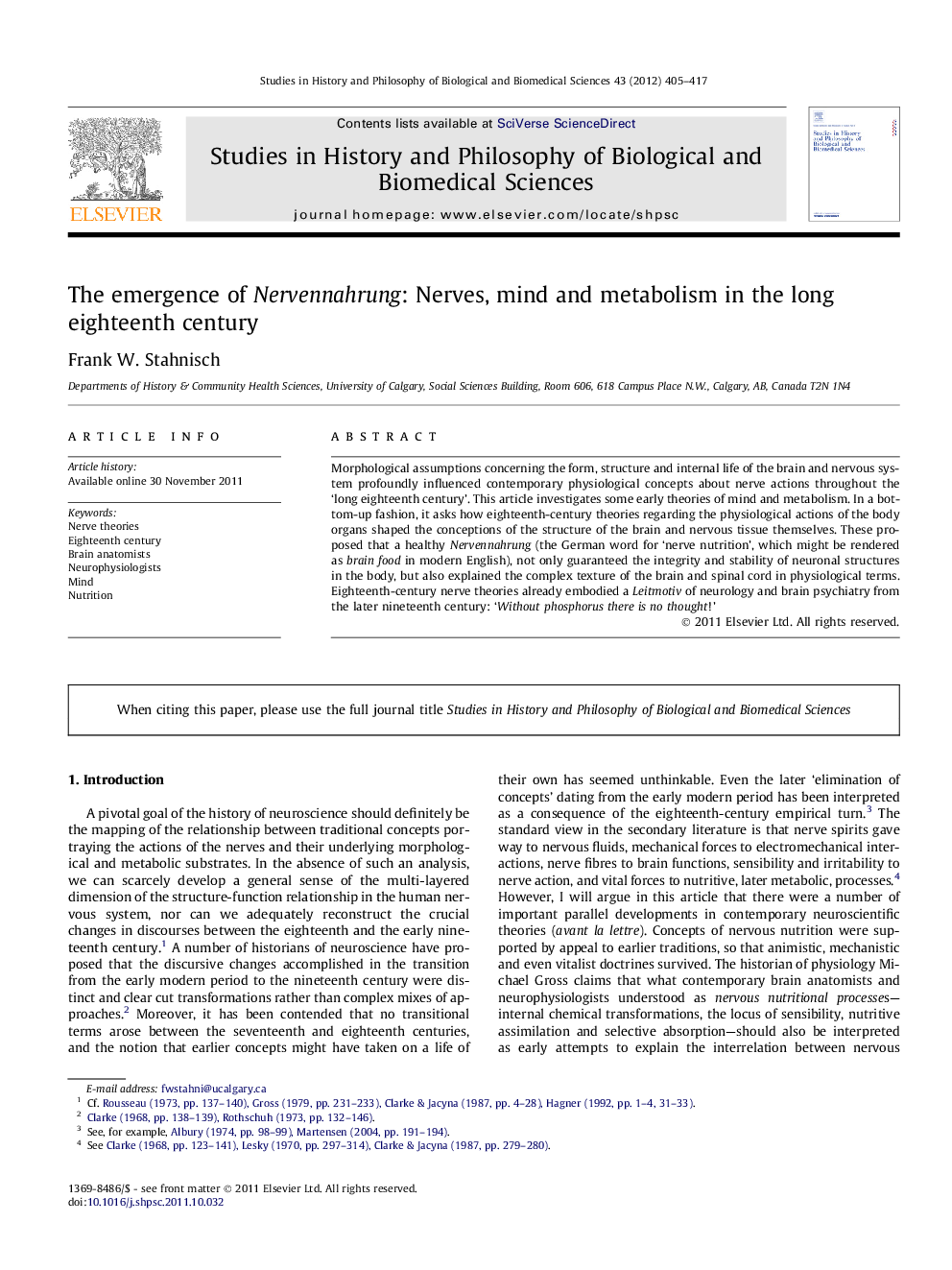| Article ID | Journal | Published Year | Pages | File Type |
|---|---|---|---|---|
| 1161835 | Studies in History and Philosophy of Science Part C: Studies in History and Philosophy of Biological and Biomedical Sciences | 2012 | 13 Pages |
Morphological assumptions concerning the form, structure and internal life of the brain and nervous system profoundly influenced contemporary physiological concepts about nerve actions throughout the ‘long eighteenth century’. This article investigates some early theories of mind and metabolism. In a bottom-up fashion, it asks how eighteenth-century theories regarding the physiological actions of the body organs shaped the conceptions of the structure of the brain and nervous tissue themselves. These proposed that a healthy Nervennahrung (the German word for ‘nerve nutrition’, which might be rendered as brain food in modern English), not only guaranteed the integrity and stability of neuronal structures in the body, but also explained the complex texture of the brain and spinal cord in physiological terms. Eighteenth-century nerve theories already embodied a Leitmotiv of neurology and brain psychiatry from the later nineteenth century: ‘Without phosphorus there is no thought!’
